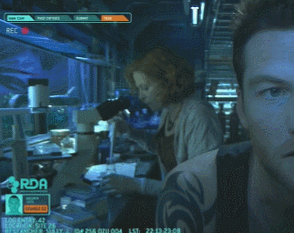1 June 2023
Although the automatic pipette plays one of the main roles during your lab work, it is an item that appears relatively infrequently in movies and TV series – even those set in labs. You may be wondering why? No, it’s not at all that it is an item that is not very … “cinematic”. It is enough to look at the EPRO Sailor pipette to understand that it would steal any cinematic scene for itself. The problem of infrequent depiction of pipettes and pipetting people in films and TV series is simply due to the fact that the authors of these cultural texts have no idea what this mysterious object is used for and how to handle it. Here are some examples.
Pipette, or a little more complicated syringe
The most common mistake that appears in movies and TV series in which characters use pipettes is how they hold it. Although it is difficult to understand, since most likely all commercially available pipettes have specially contoured handles, making it almost impossible to grasp it otherwise than it should be, film and TV series scientists persistently maniacally use them as an oversized and more complicated version of a syringe. The best screen example of the above would be a certain Walter Bishop from the TV series Fringe. You must know that Bishop was one of the smartest and brightest scientists of his generation. From the 1970s to the early 1990s, Walter was head of the biochemistry department at Harvard University. And he held the pipette during his vitally important research for the fate of the world in this way:

As it turns out, it’s not just the greatest serial-film minds who use an extremely rare pipetting technique – “on the syringe.” Hospital doctors at a private California clinic from the TV production Private Practice are also familiar with it:

Turning the pipette “upside down”
Another fairly common mistake found in movies and TV series that show pipetting scenes involves turning the pipette with the liquid in the tip “upside down.” I had the unpleasantness of noticing this practice, which is often lethal for the pipette in the rather little-known series Eureka.

A similar error in the art of pipetting can also be seen in James Cameron’s movie Avatar. This is all the more strange because the creator of such productions as Titanic and Terminator places a very high value on scientific accuracy. Meanwhile, a confident Sigourney Weaver, as a skilled xenobotanist (she has dealt with alien plant forms) uses a vaguely precise technique of taking a liquid with a pipette set at a 45-degree angle, and then lifts the instrument with the inserted tip upwards for quite a long time under laboratory conditions. I do not augur spectacular research results for her in this case.

A pipette tip? What for?
I don’t know if it’s true, but it’s rumored that it’s not uncommon for novice lab technicians to pipette without a tip attached to the cone of the pipette shaft. The dangers of such actions, of course, I do not have to explain to you. However, they should be explained to filmmakers, who quite regularly forget to use tips in pipetting scenes. Here’s an example of the use of a pipette without a tip in conjunction with the aforementioned “per syringe” pipetting technique from the series Continuum.

If it seems to you that with the above example we have most likely reached the very end of film-serial-pipette nonsense, I’d like to sadly inform you that you are mistaken. For at the very end I would like to present you with a scene proving that its creators have no clue what the pipette is. The following sequence of shots comes from one of the episodes of the series Farscape. In it we see a woman, a representative of the planet Delvia, pipetting her own hand. Thus, the pipette in the production in question is again a kind of syringe without a tip. This time, however, it is used to inject something into the body, which undoubtedly brings satisfaction. However, let’s not be so critical and let’s appreciate the fact that the actress does not use the pipetting technique “on the syringe” and tries to keep the device vertical. That’s really quite a lot.

Tagi: EPRO, Pipette, pipetting